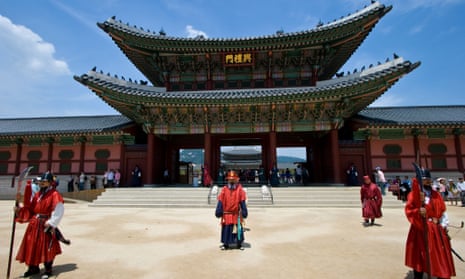North and South Korean researchers are collaborating on the excavation of an ancient historical site at Manwoldae, home to the Koryo dynasty’s royal palace, in an unprecedented joint project between the two countries who have technically been at war since the 1950-53 Korean conflict.
Historians and archaeologists from the South crossed the border to the North Korean city of Kaesong yesterday to begin the work, hoping that the project will build awareness of the common history between the Koreas.
“It is the first time since the division [in 1945] that Southern and Northern members have worked at the same place for 40 to 60 days per year. There were wars of nerves between South and North scholars due to differences in methodologies, but we were in a same boat on the achievement of this excavation,” a project statement reads.
Approximately 80 South Koreans historians and archaeologists will work from Kaesong over the next six months. Although the project began in 2007, it has had a fitful few years due to fluctuations in inter-Korean relations. Last month, the South Korean Ministry of Unification highlighted the importance of finding common ground between the countries through sports, co-excavation on historical sites and cultural communication, and confirmed that this project is a partial fulfilment of its May statement.
“North Korea has already recognised the necessity for long-term excavations, but it was hard to get permission from the South Korean government. The budget for this project decreased after the change of administrations to former president Lee Myung-bak (in 2008),” said Shin Joon-young, secretary general at the Council of South and North Korean Historians.
Writing in the magazine Archeology, Kim Hyung-eun says that both country’s see the collaboration as a way of preserving their shared history: “Manwoldae is equally important to both nations as evidence of their past.”
Kim writes that the project also offers the North the chance to share in new archeological technologies previously unavailable due to the country’s economic difficulties.
World heritage site
During this current phase of excavation the team will focus on Manryeong-jeon, the king’s bedroom. About 15 members of the team will commute between the site and the Kaesong Industrial complex.
Kaesong was the capital of Korea during the Koryo dynasty between 935–1392. Manwoldae is 10 minutes by car from the centre of Kaesong, now an industry centre in the North.
The ancient palace utilises the slanted shape of its home at the foot of Mount Songak, without damaging the original environment. Manwol means “full moon”, a name chosen due to the palace’s shape.
The site was designated as a Unesco World Heritage site in 2013. The organisation describes the ancient city as containing: “palaces, institutions and tomb complexes, and defensive walls and gates”, that embody the political, cultural, philosophical and spiritual values of the region’s history.

Comments (…)
Sign in or create your Guardian account to join the discussion